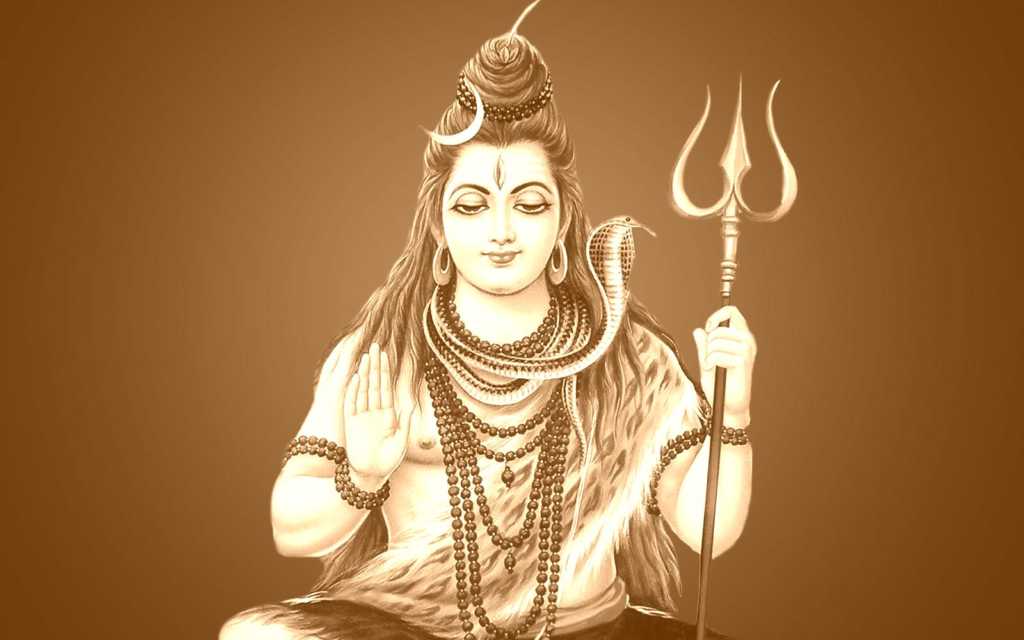Shiva, the Destroyer, among the Trinity, is very unique and different from the rest of Gods. He is also called as Bhava, which means Creator, as only by destroying the existing status-quo can we create anything new, thus he represents the unique transformational dimension in evolution without which there is no movement forward. In other words he represents the only constant, which is Change. Which is why, both the Creator, Brahma, and the Operator, Vishnu, among the Trinity themselves could not see his beginning or the end when they attempted to, as Change and Evolution is a constant and unending process.
He is very different from other Gods as he is non-discriminatory and accessible to all, and represents as one without home or shelter and without any ostensible ornamental glory or attire.
Thus he chose to reside in as reclusive a place as Kailash as much as in crematoriums and wears the ash from the cremated dead bodies, dons elephant hide as his costume and snakes as ornaments. Again it represents the equality among all, as death is the only thing that makes everyone equal, and also signifies the fallacy of going behind illusory material gains as everything finally is charred to ashes, by Time, the ultimate destroyer of all things, yet he was the one to kill even time, as Kala Samhara Murthy.
The benevolence or tolerance of Shiva is so high, as he drank the poison coming from the churning of the ocean by Devas and Asuras, which again means only he is capable of taking the worst of all the negativities in any process and clear it. So much so, even insults showered at him, he accepts as Ninda Stuti (Hymn of Insults). When Daksha insulted him, his wife Sati, Daksha’s daughter, jumped into the yagna fire unable to bear the insult, he punished Daksha not because he insulted him, but Sati was pained to death. And the punishment itself was in a blessing, when Daksha’s head was removed and replaced by a goat’s head, again signifying his Ahankaar or Ego was killed, by the removal of his head.
Shiva is the only God worshipped even by Asuras, and Ravana is among his greatest Bhaktas.
And also by people of every sect or caste, regardless – like fishermen, craftsmen like potters, smiths, and hunters, why even thieves. To signify that, in Sri Rudram, he takes all these as his own forms and names which shows he is in all and he represents everything and everyone without discrimination, as in
Kulalebhyah, Karmaarebhyascha vo namo namah punjishtebhyo nishaadebhyascha vo namo namah
(To the one who is the potter, the blacksmith, salutations to him who is the hunter who uses the nets, and the fisherman)
Nishangina ishudhimate taskaraanaam pataye namo namo vanchate parivanchate sthaayoonaam pataye namo namah
(Salutations to him who holds the bows ready to shoot, to him who has the quiver and to him who is the leader of dacoits/thieves, salutations to him who cheats, to him who is the greatest of all cheats, and the leader of those who steal by cheating)
The greatest of his messages was to Sri Adi Shankara himself, when Shankara was in Kashi with his disciples, one day while he was walking, a Chandala (a lower caste untouchable) appeared before him with four dogs. When Shankara’s disciples told him to move away from their Guru’s way, the Chandala asked him –
“Oh the best among Dvijas (twice born), by saying “move away, move away”, do you wish to move matter from matter? Or you mean to separate the Spirit (Chaitanya or Soul) from Spirit?
Is there any difference in the jewel of the Sky (Sun) when it is reflected in the waters of Ganga or in a dirty ditch in the slum? Is there any difference in the space contained by a golden pot or an earthen pot? In the ocean of blissful consciousness, devoid of any thought ripples, how can there be this difference as to this is brahmana and this is a chandala?”
Stunned by this question, Shankara realised it was Lord Shiva who himself has taken the form of Chandala with four Vedas as four dogs with him and prostrated before him and then composed Manisha Panchakam of five verses that end with the line
Chandalostu, sa tu dvijostu Gururityesha manisha mama
(Whether you are a Chandala or a Dvija, you are my Guru having removed my ignorance and showed me that behind the apparent external differences, the shining blissful consciousness is one among all of us, thus is my firm conviction)
This blessing of Shankara led him to champion the Advaita Siddhanta or the Non-duality philosophy in Sanatana Dharma.
There is no other God who represents the ultimate truths of eternal change, equality, non-discrimination and non-duality as Shiva himself who also represents the completeness of the Universe by depicting half of his form as the feminine, in Ardhanaareeshwara – again another representation for equality among gender, and even transgenders!
